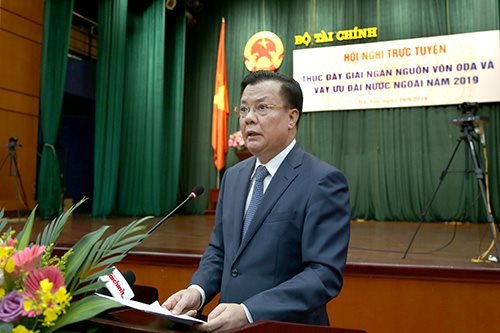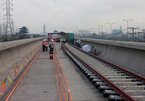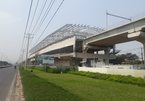 |
| Minister of Finance Dinh Tien Dung speaks at a teleconference in Hanoi on June 26. Red tape is one of the main reasons for slow loan disbursement – PHOTO: THOI BAO TAI CHINH |
Speaking at a teleconference in Hanoi on Wednesday, Sidgwick said Vietnam had a good rate of disbursement in the past. However, the rate has been on the decline since 2014, and it is currently very slow, reported the local media.
Vietnam’s average disbursement rate in 2018 reached 11.2%, or half of the rate in the 2011-2014 period, at 21.7%, and half the rates of other countries, according to the director.
He pointed out that even minor changes in projects such as increases in scale, six-month loan extensions, cost structure changes or the use of contingency funds require adjustments in investment principles, leading to temporary suspensions of activities and payments.
Sidgwick also warned that slow disbursement could incur additional costs and higher commitment fees for the Government, which are charged by a lender to a borrower for an unused credit line or undisbursed loan.
Besides possible delays in project completion, there could be a potential contract dispute between project owners and contractors, affecting Vietnam’s credibility.
Minister of Finance Dinh Tien Dung said that ODA disbursement reached over VND1.6 trillion in the first five months of 2019, equivalent to only 2.7% and 5.6% of targets set by the National Assembly and the Government for the entire year, respectively.
The disbursement of ODA and foreign preferential loans has failed to meet estimates since 2016, according to the Cabinet member.
He cited the 2016-2020 medium-term public investment plan, noting that Vietnam should disburse VND360 trillion (US$15.4 billion) in ODA and other concessional loans received between 2016 and 2020.
However, it has only disbursed VND133 trillion (US$5.7 billion) as of May 2019. This means the country has only spent 37% of the funding it has been given for the four-year period.
Truong Hung Long, director of the Department of Debt Management and External Finance, under the Ministry of Finance, claimed part of the reason for the slow disbursement was the delay in releasing the 2019 public investment plan, while the Ministry of Planning and Investment has only allocated 48% of the total fund to provinces and cities.
The poor fund allocation and slow execution of projects are major concerns for project owners and donors, Long added.
For projects financed by the six major development lenders, over 60 projects have not been allocated sufficient funding for 2019 and are facing a shortfall of VND34 trillion (US$1.4 billion).
These ODA providers are the World Bank, the ADB, the Japan International Cooperation Agency, the Export and Import Bank of Korea, the French Development Agency and the German Development Bank.
However, according to Long, several projects, despite having sufficient funds, still suffered delays in execution, indicating a lack of preparation, especially during the process of technical design, site clearance and resettlement.
Deputy Minister of Finance Tran Xuan Ha deemed the revision of the regulatory framework necessary. As the new Public Investment Law will soon come into effect, a new regulation on ODA management with streamlined processes is essential. SGT

US$17 billion in ODA loans yet to be disbursed
Some US$17 billion worth of official development assistance (ODA) loans pledged by six development banks have yet to be disbursed, heard attendees at a meeting held recently.

ODA projects employ foreign consultants at high costs
Official development assistance (ODA)-funded projects have been found to employ foreign consulting firms at high costs, noted a report from the State Audit of Vietnam (SAV).
 Vietnam’s average disbursement rate is much lower than that of other recipients of the Asian Development Bank’s ODA loans, largely due to cumbersome and time-consuming procedures, said Eric Sidgwick, ADB country director for Vietnam.
Vietnam’s average disbursement rate is much lower than that of other recipients of the Asian Development Bank’s ODA loans, largely due to cumbersome and time-consuming procedures, said Eric Sidgwick, ADB country director for Vietnam.